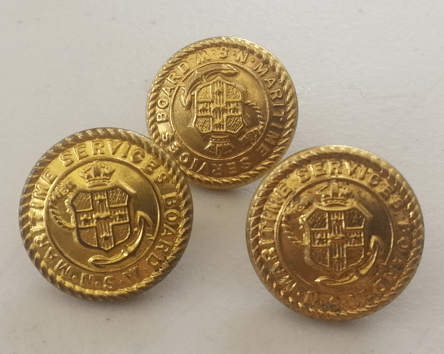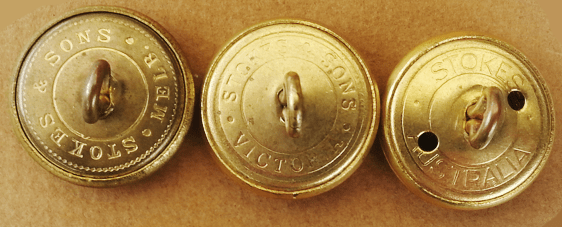Using Backmarks for Dating
A backmark is any design, name or motto die-stamped onto the back of a button. Certainly they were in use by the late 18th century as a form of manufacturers’ branding. As firms changed their name and/or address, the change of backmark can help, along with the construction method and in the case of uniform buttons, the design on the front, in dating when the button was made or used.
There are some caveats to this dating method. As the button backs were made separately from the fronts, uniform buttons could be made up with pre-prepared and “out of date” backs, even if the business had changed name. Sometimes there was quite a lag between the establishment of a military unit and when the buttons/uniforms reached those who were to wear them. Some button designs were in use for decades. Due to the inevitable accidental loss of buttons from uniforms, they were sometimes replaced with non-contemporaneous buttons. I have noticed vintage uniforms in museum collections with non-matching or non-original buttons.
The three buttons featured here are a case in point. They were all made by Stokes for the NSW Maritime Services Board but have three different backmarks: Stokes & Sons Melb., Stokes & Sons Victoria, and Stokes Australia.


The Maritime Board dates from 1936 until 1995. Stokes & Sons Pty. Ltd. changed to Stokes (Australasia) Ltd. in 1962. Therefore, two of the buttons date from 1936-62. The ‘Stokes and Sons Victoria’ may date before the early 1950s as it does not have vent holes. The back with ‘Stokes Australia’ may date from 1962. It does have the two vent holes that date in use from the early 1950s. Unfortunately, that’s as close as we can get.
For any comments or queries, please use the Contact page.
